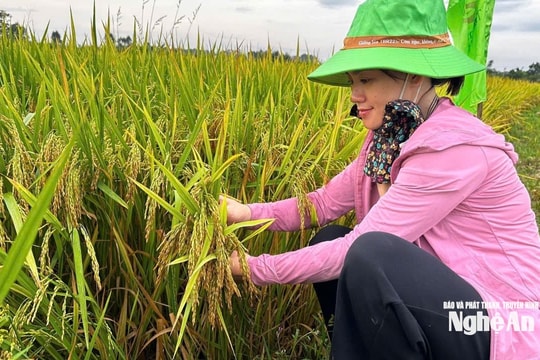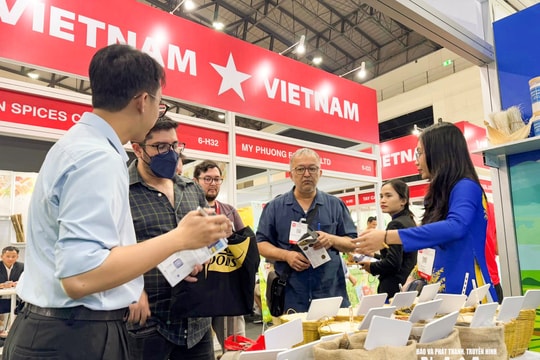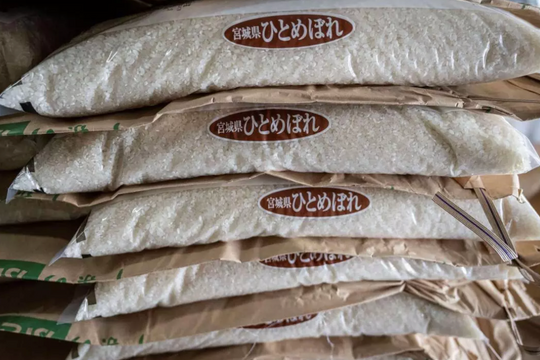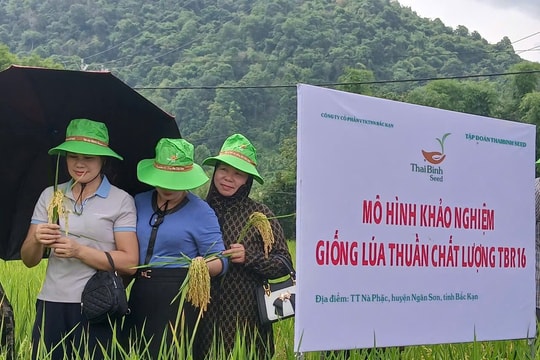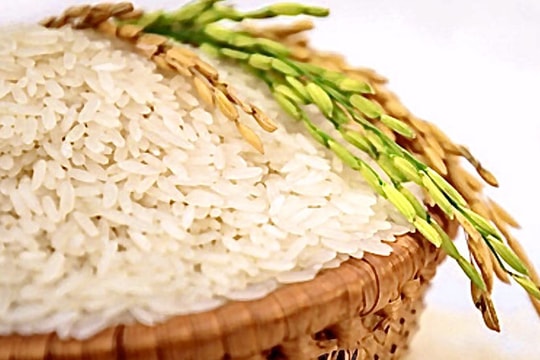What will happen to Vietnamese rice if Thailand releases record stockpiles?
Thailand's biggest ever dump of rice is mostly old rice, so if there is any impact, it will only affect the price of low-grade Vietnamese rice.
According to a new plan recently announced by the Thai National Rice Policy Committee, the government will sell 11.4 million tons of rice stock in May and June. The rice will be sold by auction, with each lot being one million tons.
If the plan to sell off the remaining rice stock is successful, it will be the largest sale of rice to the world market in the history of Thai rice exports, larger than the previous average annual rice export volume. For many years, Thailand's average annual rice export volume has averaged 10 million tons.
 |
Low-grade Vietnamese rice will be affected if Thailand releases 11.4 million tons of rice. |
Assessing the above impact, Mr. Huynh The Nang, Chairman of the Vietnam Food Association, General Director of the Southern Food Corporation, said that in recent years, the amount of rice in Thailand's inventory has always been considered to have an impact on world rice prices, including Vietnam's. However, in this announcement of selling 11.4 million tons of rice, most of it is low-grade rice, only about 100,000 tons is quality rice, so it is possible that only low-grade rice from Vietnam is affected.
However, according to Mr. Nang, businesses should not be too worried, because the contracts signed from the fourth quarter of 2015 until now have not yet delivered all the goods, about 1.4 million tons. That does not include the newly signed contracts. Particularly, high-grade rice of Vietnam will not be affected because in these markets, Thai rice is less competitive.
Sharing the same opinion with Mr. Nang, a representative of a rice exporting enterprise in Can Tho also said that this year, if not counting the amount of rice stock being sold off as mentioned above, Thailand only set an export target of about 9 million tons. Therefore, this sale is very unlikely to be successful and if successful, it will only affect the low-grade rice segment. The reason is because Thai rice is mostly old, low-quality rice. If sold, it will only compete with Vietnamese rice in poor countries like Africa or humanitarian aid organizations.
Also confirming that there will be an impact but not too much, a representative of Loc Troi Group said that for traditional markets of Vietnamese rice, although there is a demand for rice imports, it will only be indirectly affected. At Loc Troi, export orders for low-grade and high-grade rice products are still stable because most of them are long-term contracts. Currently, markets such as China, the US, and Japan are still buying at high prices. In particular, Loc Troi's high-grade rice segment is favored by many markets.
Assessing the above situation, rice expert - Professor Dr. Vo Tong Xuan said that the Vietnamese rice market will be affected but not seriously. Because the Thai rice being sold is mostly old rice that has been stored for 2-3 years, and is of poor quality. In 2013, this country also sold 8 million tons of old rice, but the amount purchased by importing enterprises was quite low. If it is stored for a long time, this rice can only be used as animal feed and consumers will not choose it.
"Although Vietnamese rice is not uniform, most of it is new rice, much better quality than old Thai rice, so if there is an impact, the price will change a little. In fact, with the amount of goods being dumped, I think this is too large a number, the Thai government will have difficulty selling it successfully because only Africa, Indonesia and the Philippines can buy this type of product. However, the amount of purchase is also limited and if they do buy, these countries will only buy about more than a million tons," Mr. Xuan said.
 |
Vietnam's largest rice import markets in the first four months of the year. |
Also very interested in this event, in the regular press conference of the Ministry of Industry and Trade in May, Deputy Minister Do Thang Hai said that concerns about price competition with Thai rice when this country releases its rice stock are well-founded and asked businesses to closely follow export orders, find ways to maintain the market, especially key and traditional markets.
The Ministry of Industry and Trade will strengthen promotion, development, and market diversification, gradually reducing over-dependence on one market. At the same time, the Ministry will coordinate with the Ministry of Agriculture to promote production and consumption of high-quality rice varieties that bring great economic value.
The Ministry of Industry and Trade also sent a document to the Ministry of Finance expressing concerns about fierce price competition when Thailand's rice warehouses have up to 7.5 million tons of substandard rice, 1.5 million tons for industrial processing and 2.4 million tons of rotten rice... In addition, competition also comes from major rice exporting countries such as Cambodia, India, Myanmar... In the immediate future, the Ministry proposed to renegotiate the protocol with China on plant quarantine for rice to comply with international practices, avoiding disadvantages for Vietnamese rice.
In early 2016, Thailand set a target of 9 million tons of rice exports in 2016, a slight decrease compared to the previous year. The main export markets are China, Indonesia, and the Philippines - these are also major rice importers of Vietnam. Meanwhile, Vietnam set a target of 6.5 million tons of exports. Vietnam currently ranks third in the world in rice exports, after India and Thailand.
According to the Ministry of Agriculture and Rural Development, Vietnam's rice export volume in April is estimated at 510,000 tons with a value of 235 million USD. In the first four months of the year, rice export is estimated at 2.06 million tons and 916 million USD, up 11.8% in volume and 13.8% in value compared to the same period in 2015.
The average export price of rice in the first four months of the year increased compared to the same period last year, fluctuating between 420-438 USD per ton.
China is ranked first in Vietnam's rice imports in the first three months of the year with 31.54% market share, reaching 474.39 million tons, turnover of 214.58 million USD, up 41.78% in volume and 61.76% in value compared to the same period in 2015. Indonesia is the second largest rice import market, with 20.45% market share, reaching 350,700 tons and 139.1 million USD, up 73.8 times in volume and 74.2 times in value compared to the same period in 2015. Currently, Ghana, the United Arab Emirates, the Philippines, Ivory Coast, Singapore and the US... are markets with strong growth, especially for high-quality rice. |
According to VNE

